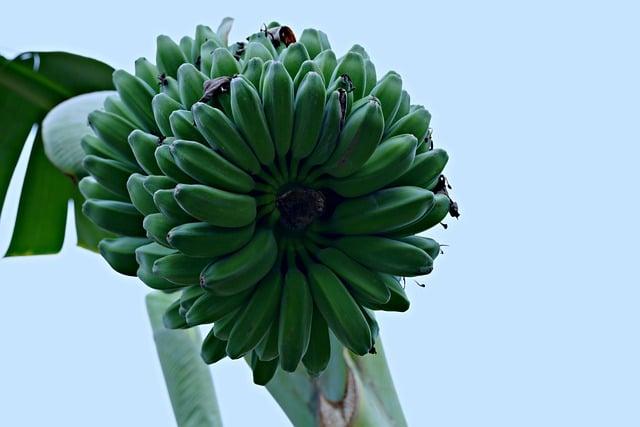Once upon a time in a sunny backyard, a curious golden retriever named Max watched his owner munching on a crisp apple. Intrigued, he wagged his tail, hoping for a taste. His owner, knowing that apples are packed with vitamins A and C, decided to share a slice. Max savored the juicy treat, his eyes sparkling with delight. But remember, moderation is key! While apples can be a healthy snack for dogs, always remove the seeds and core. So, next time you enjoy an apple, consider sharing a slice with your furry friend—it’s a tasty way to boost their health!
Contents
- Understanding the Nutritional Benefits of Apples for Dogs
- Identifying Safe Apple Varieties and Preparation Methods
- Recognizing Potential Risks and Allergies Associated with Apples
- Incorporating Apples into Your Dogs Diet: Tips and Recommendations
- Q&A
Understanding the Nutritional Benefits of Apples for Dogs
Apples are not just a delicious snack for humans; they also offer a range of nutritional benefits for our canine companions. Rich in essential vitamins and minerals, apples can be a valuable addition to your dog’s diet. They are an excellent source of **vitamin A**, which supports healthy skin and vision, and **vitamin C**, known for its immune-boosting properties. These vitamins contribute to overall health, helping to keep your dog active and vibrant.
In addition to vitamins, apples are packed with **dietary fiber**, which aids in digestion and promotes a healthy gut. This fiber can help regulate your dog’s bowel movements and prevent constipation, making apples a great natural remedy for digestive issues. Furthermore, the crunchiness of apples can also help to clean your dog’s teeth, reducing plaque buildup and promoting oral health.
Another significant benefit of apples is their low-calorie content, making them an ideal treat for dogs that need to maintain a healthy weight. Unlike many commercial dog treats that are high in calories and additives, apples provide a sweet, satisfying snack without the guilt. This makes them perfect for training rewards or simply as a refreshing treat on a warm day.
Lastly, apples contain **antioxidants**, which play a crucial role in fighting free radicals in your dog’s body. These antioxidants can help reduce the risk of chronic diseases and promote longevity. By incorporating apples into your dog’s diet, you are not only treating them to a tasty snack but also contributing to their long-term health and well-being. Just remember to remove the seeds and core, as they can pose a choking hazard and contain harmful substances.
Identifying Safe Apple Varieties and Preparation Methods
When considering apples for your canine companion, it’s essential to choose the right varieties. Not all apples are created equal, and some can be more beneficial than others. **Sweet varieties** such as Fuji, Gala, and Honeycrisp are excellent choices, as they tend to be more palatable for dogs. These apples are not only tasty but also packed with nutrients that can contribute to your dog’s overall health. On the other hand, **sour varieties** like Granny Smith may be less appealing and could cause digestive upset in some dogs.
Preparation is key to ensuring that apples are safe and enjoyable for your dog. Always wash the apples thoroughly to remove any pesticides or chemicals that may be present on the skin. It’s advisable to **remove the seeds and core**, as apple seeds contain cyanide, which can be harmful in large quantities. Additionally, cutting the apple into small, manageable pieces can help prevent choking and make it easier for your dog to chew and digest.
Another important aspect to consider is the method of serving apples. Fresh, raw apples are a fantastic treat, but you can also explore other preparation methods. **Baking or steaming** apples without added sugars or spices can create a warm, comforting snack that many dogs enjoy. You might also consider making homemade apple treats by mixing pureed apples with dog-friendly ingredients like oats or peanut butter, then baking them into delicious cookies.
Lastly, moderation is crucial when introducing apples into your dog’s diet. While they are a healthy snack, too much fruit can lead to digestive issues such as diarrhea. Start with small amounts to see how your dog reacts, and always consult your veterinarian if you have any concerns about incorporating new foods into their diet. By choosing the right apple varieties and preparation methods, you can provide a nutritious and enjoyable treat that your furry friend will love.
Recognizing Potential Risks and Allergies Associated with Apples
While apples can be a healthy treat for dogs, it’s essential to be aware of potential risks and allergies that may arise. Some dogs may have sensitivities to certain fruits, including apples. Symptoms of an allergic reaction can range from mild to severe and may include:
- Itching or scratching at the skin
- Swelling of the face, ears, or paws
- Gastrointestinal upset, such as vomiting or diarrhea
- Difficulty breathing in severe cases
Another critical factor to consider is the presence of seeds and cores. Apple seeds contain cyanogenic compounds, which can be harmful if ingested in large quantities. While a few seeds may not cause immediate harm, it’s best to remove them before offering apples to your dog. Additionally, the core can pose a choking hazard or lead to intestinal blockage, so it should also be discarded.
When introducing apples into your dog’s diet, moderation is key. Too much fruit can lead to digestive issues, including diarrhea or an upset stomach. Start with small pieces to gauge your dog’s reaction, and always monitor for any signs of discomfort or allergic response. Consulting with your veterinarian before adding new foods to your dog’s diet is a prudent step to ensure their health and safety.
Lastly, consider the overall health and dietary needs of your dog. Dogs with specific health conditions, such as diabetes or pancreatitis, may need to avoid high-sugar fruits like apples. Always tailor treats to fit your dog’s individual health profile, ensuring that any new addition complements their nutritional requirements without compromising their well-being.
Incorporating Apples into Your Dogs Diet: Tips and Recommendations
Incorporating apples into your dog’s diet can be a delightful and nutritious choice. These crunchy fruits are not only tasty but also packed with essential vitamins and minerals that can benefit your furry friend. When introducing apples, it’s important to start with small amounts to see how your dog reacts. Always wash the apples thoroughly to remove any pesticides and cut them into manageable pieces to prevent choking hazards.
When feeding apples to your dog, remember to **remove the seeds and core**. Apple seeds contain cyanide, which can be harmful in large quantities, and the core can pose a choking risk. Instead, offer your dog slices of the flesh, which are rich in fiber and vitamin C. You can also consider serving apples in various forms, such as pureed, baked, or even frozen, to keep things interesting and appealing for your pet.
For a fun and healthy treat, try making homemade apple snacks. Combine chopped apples with peanut butter and oats, then bake them into delicious dog cookies. This not only provides a tasty reward but also ensures that your dog is consuming wholesome ingredients. Additionally, you can mix apple slices into your dog’s regular food or use them as a training reward, making mealtime more exciting.
Always monitor your dog’s reaction to new foods, including apples. Some dogs may experience digestive upset if they consume too much fruit at once. If you notice any signs of discomfort, such as vomiting or diarrhea, reduce the amount you’re offering or consult your veterinarian. By introducing apples thoughtfully and creatively, you can enhance your dog’s diet while providing them with a tasty treat they’re sure to love.
Q&A
-
Can dogs eat apples?
Yes, dogs can eat apples! They are a healthy snack option that provides essential vitamins and fiber. Just be sure to remove the seeds and core, as they can be harmful to your dog.
-
What are the health benefits of apples for dogs?
Apples are rich in vitamins A and C, which support your dog’s immune system and overall health. They also contain antioxidants that can help reduce the risk of chronic diseases and promote healthy digestion.
-
How should I prepare apples for my dog?
To safely prepare apples for your dog, wash them thoroughly, remove the seeds and core, and cut them into small, manageable pieces. This makes it easier for your dog to chew and digest.
-
Are there any risks associated with feeding apples to dogs?
While apples are generally safe, moderation is key. Too much fruit can lead to digestive upset. Always monitor your dog for any adverse reactions, and consult your veterinarian if you have concerns.
apples can be a nutritious and tasty treat for dogs when given in moderation. Their vitamins and fiber support your pet’s health. Always consult your vet before introducing new foods, ensuring a safe and enjoyable experience for your furry friend.

大家好,我是彼得潘,專業的手法身體治療師。我喜歡探索和研究各種主題,並透過與人工智慧的合作分享專業、實用、有趣的文章。我們定期進行人工審核,以確保內容的準確性。如果您發現文章中有任何不準確的地方,請隨時與我們聯繫,我們會及時糾正。您可以透過 [email protected] 與我們聯繫。



